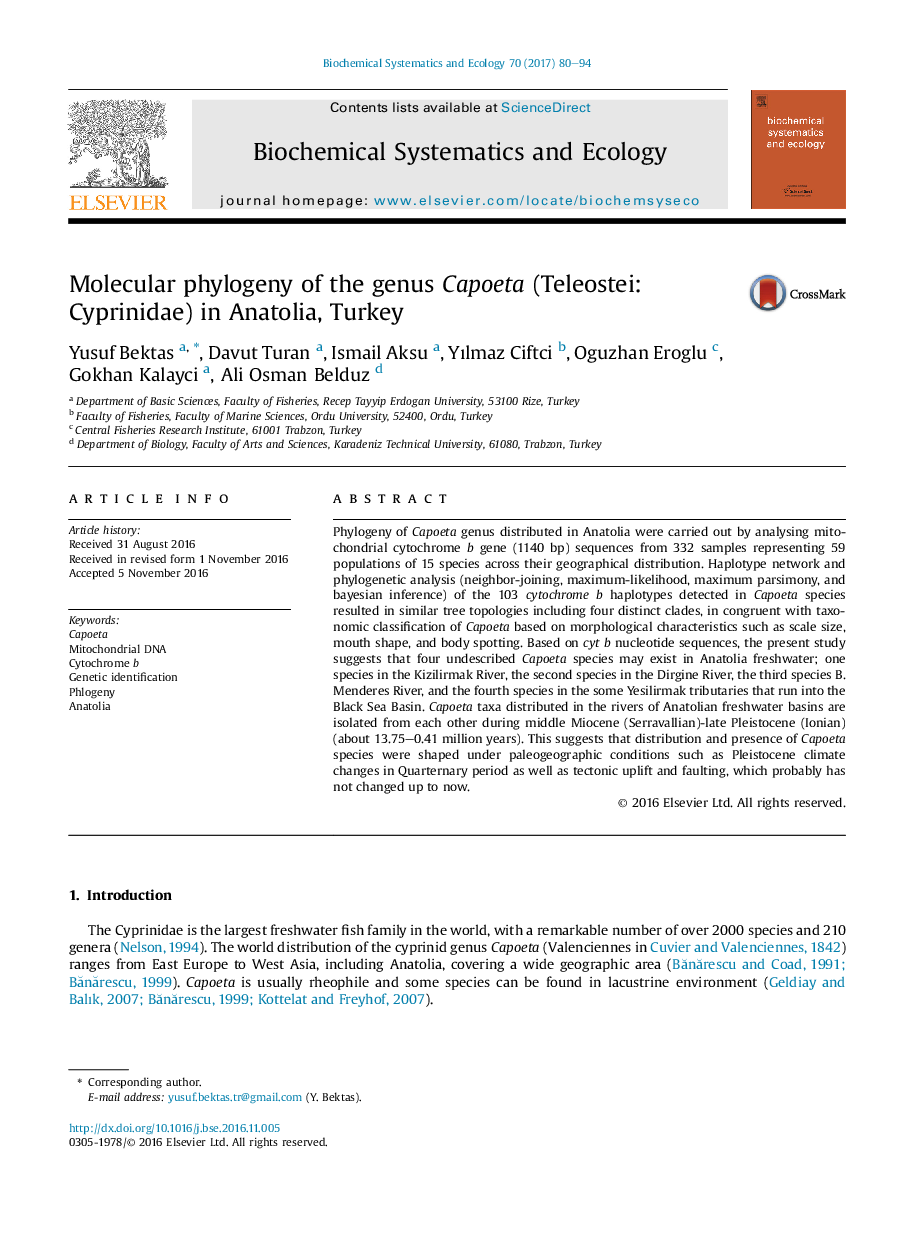| Article ID | Journal | Published Year | Pages | File Type |
|---|---|---|---|---|
| 5154967 | Biochemical Systematics and Ecology | 2017 | 15 Pages |
Abstract
Phylogeny of Capoeta genus distributed in Anatolia were carried out by analysing mitochondrial cytochrome b gene (1140Â bp) sequences from 332 samples representing 59 populations of 15 species across their geographical distribution. Haplotype network and phylogenetic analysis (neighbor-joining, maximum-likelihood, maximum parsimony, and bayesian inference) of the 103 cytochrome b haplotypes detected in Capoeta species resulted in similar tree topologies including four distinct clades, in congruent with taxonomic classification of Capoeta based on morphological characteristics such as scale size, mouth shape, and body spotting. Based on cyt b nucleotide sequences, the present study suggests that four undescribed Capoeta species may exist in Anatolia freshwater; one species in the Kizilirmak River, the second species in the Dirgine River, the third species B. Menderes River, and the fourth species in the some Yesilirmak tributaries that run into the Black Sea Basin. Capoeta taxa distributed in the rivers of Anatolian freshwater basins are isolated from each other during middle Miocene (Serravallian)-late Pleistocene (Ionian) (about 13.75-0.41 million years). This suggests that distribution and presence of Capoeta species were shaped under paleogeographic conditions such as Pleistocene climate changes in Quarternary period as well as tectonic uplift and faulting, which probably has not changed up to now.
Related Topics
Physical Sciences and Engineering
Chemistry
Organic Chemistry
Authors
Yusuf Bektas, Davut Turan, Ismail Aksu, Yılmaz Ciftci, Oguzhan Eroglu, Gokhan Kalayci, Ali Osman Belduz,
